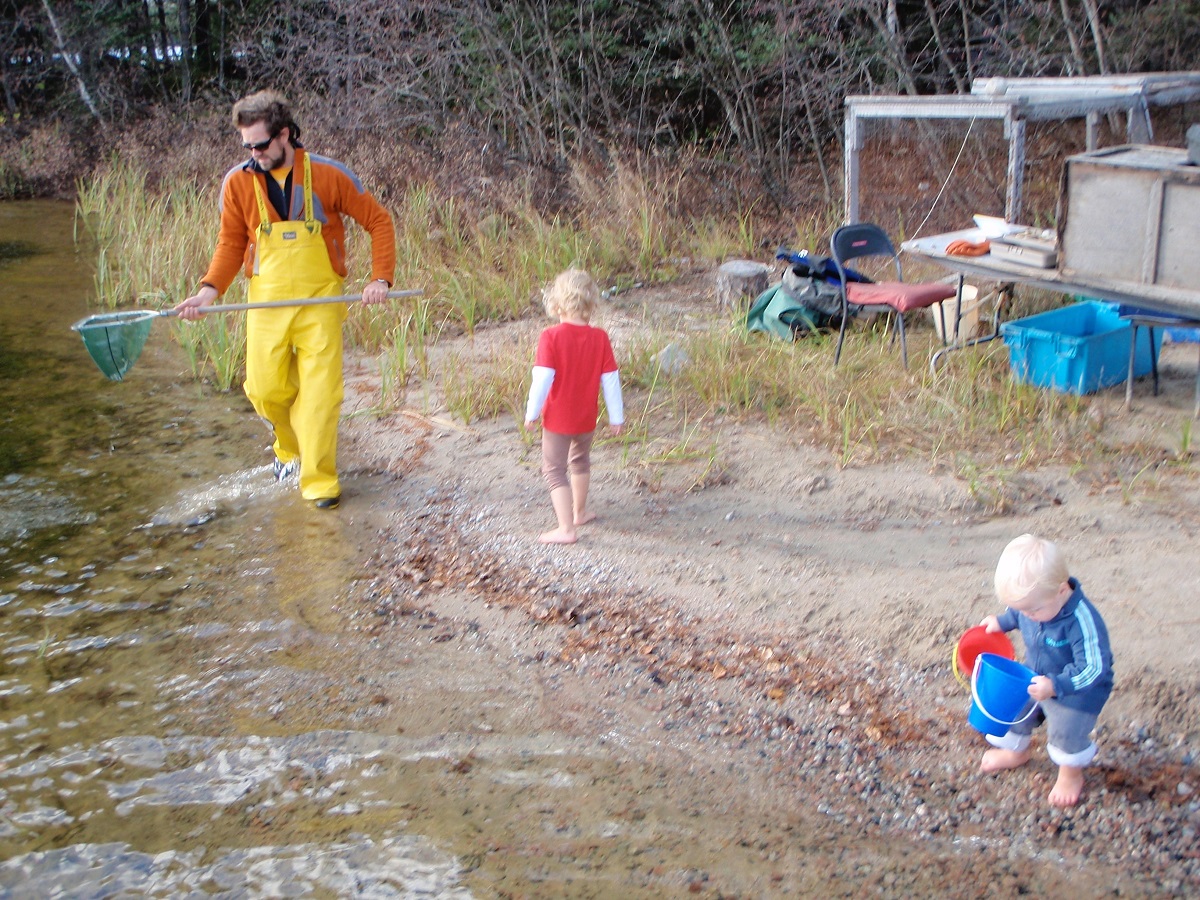Albertans grow up around mountains and their seemingly pristine lakes, but how many take the time to consider the quantity and diversity of the wildlife that calls these postcard settings home? The iconic mountain ranges and lakes of Alberta, Canada, are home to a spectrum of flora and fauna, and this is what first piqued IISD Experimental Lakes Area (IISD-ELA) Research Fellow (and Calgary native) Dr. Michael D Rennie’s interest in aquatic biology.
An undergraduate degree at the University of Calgary, a Stream Ecology field course and related fieldwork at its Kananaskis Field Stations opened Mike’s eyes to what was living under those rocks. He was immediately hooked. “I think that course really blew my mind, and exposed me to the wealth of wildlife that is living in our freshwater lakes and mountain streams.”

Through his educational history, Mike moved up the food chain from studying invertebrates to working on fish, came to learn about the Experimental Lakes Area, and was enticed by the whole-ecosystem approach, which is unique in the world of fish biology and limnology. “The impact that [the research conducted at IISD-ELA] has out there is groundbreaking, because it is one of the few places on earth where researchers can evaluate environmental effects in such a controlled environment and with such certainty as to which factors are having what effect. IISD-ELA is in a relatively isolated setting, and so it is easier to control variables and isolate and identify the stress that you are applying to a system in order to figure out how it responds.”
The stars aligned and he ultimately ended up achieving his dream: working at the world-famous research station and inheriting the Fish Populations program. Hired by the federal Department of Fisheries and Oceans (DFO), he was tasked with collecting the data needed to estimate the population of fish in the lakes that they were tracking at IISD-ELA (both the long-term reference lakes as well as the experimental lakes). He also was able to make the most of his own research interests at the site, which included looking at food web connections between fish and major ecosystem changes in the lakes, as well as using bioenergetic models to understand how energy was flowing through these systems. When the research facility was transferred from DFO to IISD, Mike elected to join IISD-ELA.
Now an assistant professor of biology at Lakehead University, Mike’s affiliation with IISD-ELA has changed to Research Fellow. “It’s really a positive step, and it has allowed me to bring in alternative sources of funding, and participate in expanding some of the programs and research topics that are going on at the site, really making sure we are using the facility to its fullest extent.”
He is, of course, not the only researcher out at IISD-ELA that is affiliated with a university. “Universities have a very important role to play at IISD-ELA in that they provide most of the research funding that goes towards new research projects. IISD-ELA also provides this exceptional platform on which university researchers can perform some pretty amazing research that they can’t do elsewhere.” He also believes that IISD-ELA researchers and university researchers have a great deal of expertise that they can share with each other, to great mutual benefit.
IISD-ELA will always be a special place for Mike personally. He has been taking his three children out there since he started working at the site. It is important to him to bring his family along when he spends extended stretches there, where his children can often aid him with experiments and explore this unique place of natural beauty.
Mike also sees a very bright future. Now that IISD-ELA is under new management, he is excited about the broadening of the research spectrum and the new educational and outreach opportunities that are already in the works. “I think we have a lot to offer communities in terms of being a place that they can now connect with, whereas before we were much more of an isolated federal research station out in the middle of the woods. It’s much more of an inviting place now, and we want people to come and visit the site, so they can understand why it’s so important, and why we need to do the work out there that we are doing.”
If you are working at a university and are interested in working with us at IISD-ELA, please contact our Head Research Scientist, Vince Palace at vpalace@iisd-ela.org.